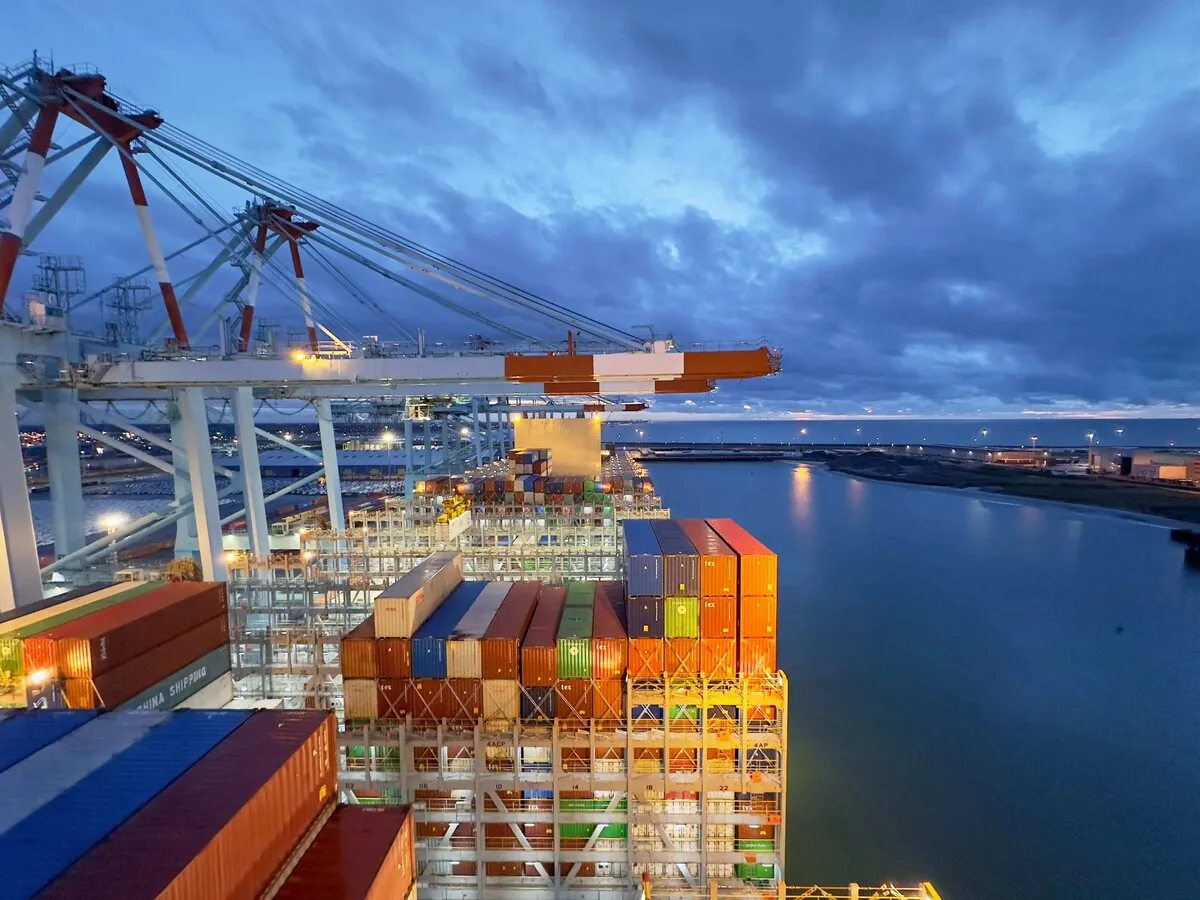The first half of 2025 proved difficult for the two largest ports in Western Europe. Antwerp-Bruges recorded a 4.3% year-on-year decline in cargo handling to 137.2 million tons, and Rotterdam by 4.1% to 211 million tons.
This trend is mainly driven by weak performance in the bulk segment. In Antwerp, the handling of liquid cargo dropped by 17.1% (fuels, naphtha, LNG), and dry by 11% (including coal, construction materials). Similarly, in Rotterdam: dry bulk decreased by 8.9%, liquid by 5.3%. Particularly hard-hit was the import of coking coal, oil products, and biodiesel.
Containers Defend Their Position
Against this backdrop, the container segment performed significantly better. In Antwerp, transshipments increased by 3.6% year-on-year (to 77 million tons), which translated into 6.91 million TEU (+3.7%). Rotterdam recorded a 2.7% increase in TEU (7 million), though the volume decreased by 1%.
Despite this success, both ports face significant operational challenges. In Antwerp, the time containers spend at terminals is already 7–8 days. Delays, detours, and strikes further burden processes. In Rotterdam too, new structures of shipping companies, a high number of loadings, and bottlenecks on the land side lead to longer waiting times – especially for inland vessels and trucks.
Hamburg Recovers
The situation looks different in Hamburg. The port handled 57.8 million tons of maritime goods from January to June 2025, marking an increase of 3.6% compared to the same period last year. The container segment had the largest share, increasing by 9.3% to 4.2 million TEU.
Container imports grew double-digit (+11.6%), exports by 6.9%. Amid the stagnation of competitors, Hamburg is regaining market shares – partly thanks to new liner services and changes in ship routes.
Transshipments of conventional general and bulk cargo (down by 3.7% to 0.6 million tons and down by 3.8% to 16.0 million tons, respectively) slightly decreased in the first half of the current year. An increase was noted to 4.7 million tons (+10.3% in the liquid cargo segment), while decreases were observed in grab cargo (-6.6% to 8.5 million tons) and agricultural products (-13.9% to 2.9 million tons). Declining demand for coal and ore again affected grab cargo transshipments. In the agricultural and bulk sectors, significantly lower grain exports (-80.8% to 852,000 tons) impacted results, despite increased imports of oilseeds (+8.9% to 1.7 million tons).
Growth Directions: Asia and the Baltic
Hamburg saw the largest increases in trade with the Far East (+10.7% to 1.8 million TEU) and the Baltic region (+20.8% to 734 thousand TEU).
In Asia, Malaysia (+93.2%), India (+41.6%), and China (+10.5%) stood out. In the Baltic, relations with Denmark (+36%), Finland (+20.1%), and Poland (+28.8%) were positive. A decline (-19.3%) was recorded only in trade with the USA – mainly due to American trade policy.
Investments and New Connections
Hamburg also recorded a significant increase in ship calls – especially the largest units over 10,000 TEU (+51.6%). Just in the first half of 2025, 127 ships with a capacity over 24,000 TEU called at the port, which is 29.6% more than the previous year.
Transshipment type transshipments increased by 23.8% to 1.6 million TEU, and container hinterland transport by 2.2% to 2.6 million TEU. Port authorities emphasize that thanks to infrastructure modernization – including widening the navigation channel and redeveloping the Waltershofer Hafen area – Hamburg strengthens its position as a gateway connecting Asia with Northern Europe.
Collaboration: Sabina Koll









